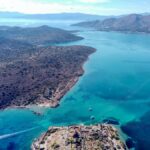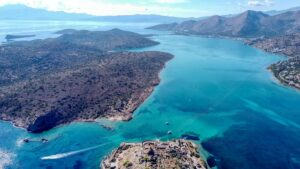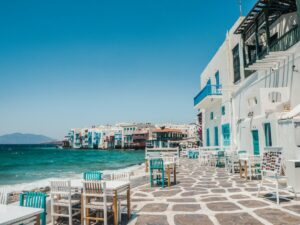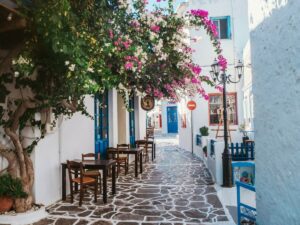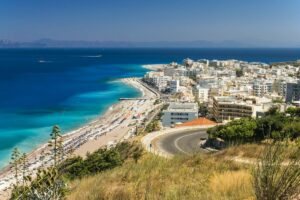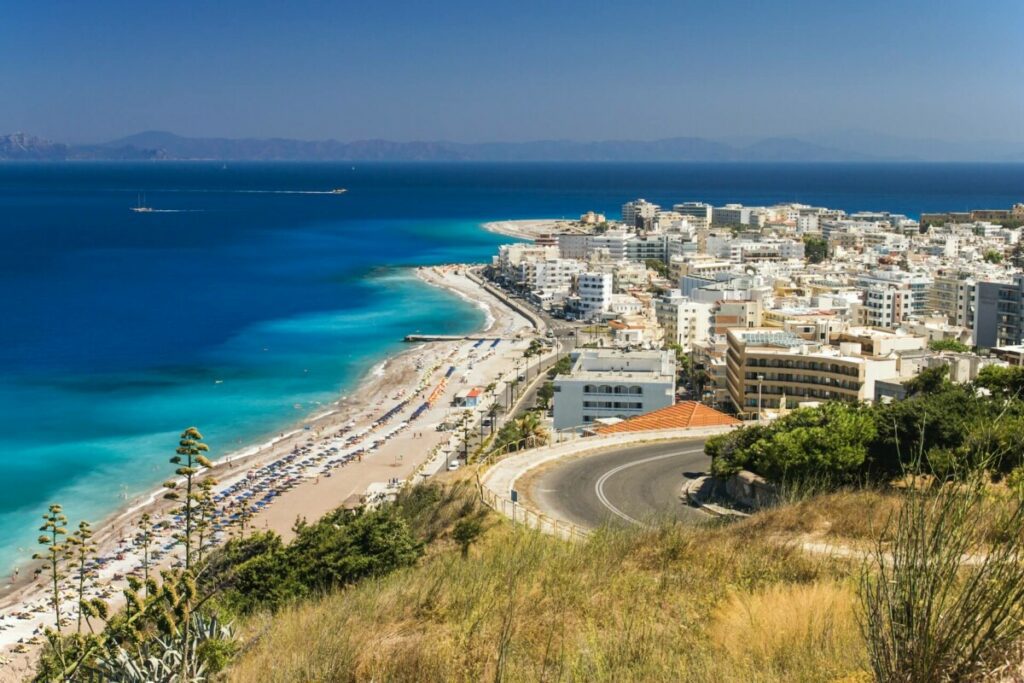

While Greece itself is a popular tourist destination – and for good reason – the Greek islands attract attention for their sandy beaches and rich history. The main islands mostly lie in clusters, either in the Aegean Sea, the Ionian Sea, or the Saronic Gulf, with each cluster boasting its own natural beauty.
If you’re looking for the biggest islands in Greece, then look no further than Lesvos, Naxos, Crete, Rhodes, and Chios.
These five Greek Islands offer something for everyone – whether it’s vibrant nightlife or tranquil countryside retreats. From pristine sandy beaches in Corfu to rugged mountainside villages in Rhodes; these are some of the most popular destinations in Greece.
Lesvos island
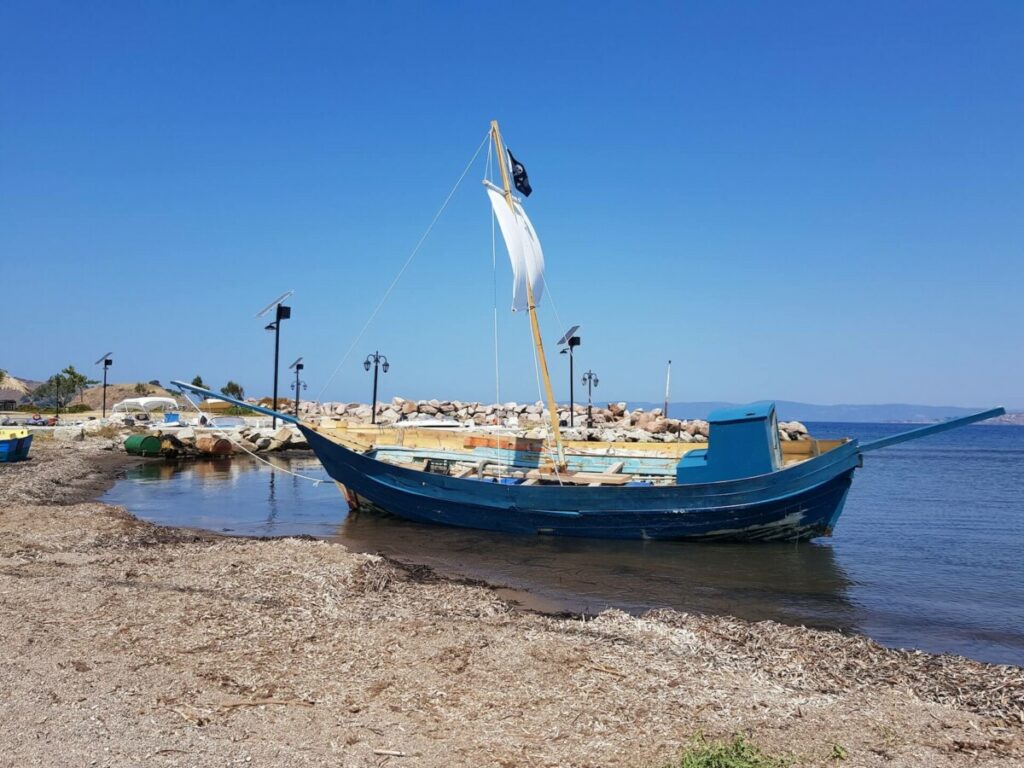

Measuring just over 630 square miles, Lesvos is the third largest of the Greek islands and forms part of the cluster of North Aegean islands. The island is mountainous with many valleys and plains.
Lesvos is a stunning island in the heart of the North Aegean islands – a grouping off the west coast of Turkey – with an abundance of attractions, from its beautiful beaches to its historic sites.
The climate in Lesvos is Mediterranean, with hot, dry summers and mild, wet winters. Average temperatures range from 10-20°C during winter months to 25-35°C during summer months.
History
Lesvos has been inhabited since prehistoric times as evidenced by archaeological findings from Neolithic settlements around 3000 BC. During antiquity, it was part of various empires including those of Alexander the Great, Rome, Byzantium, and Ottoman Turkey, until it became part of Greece in 1912 following the Balkan Wars.
Throughout its history, it has been known for its production of olive oil which continues today, along with other agricultural products such as wine grapes, figs, and honey.
Naxos
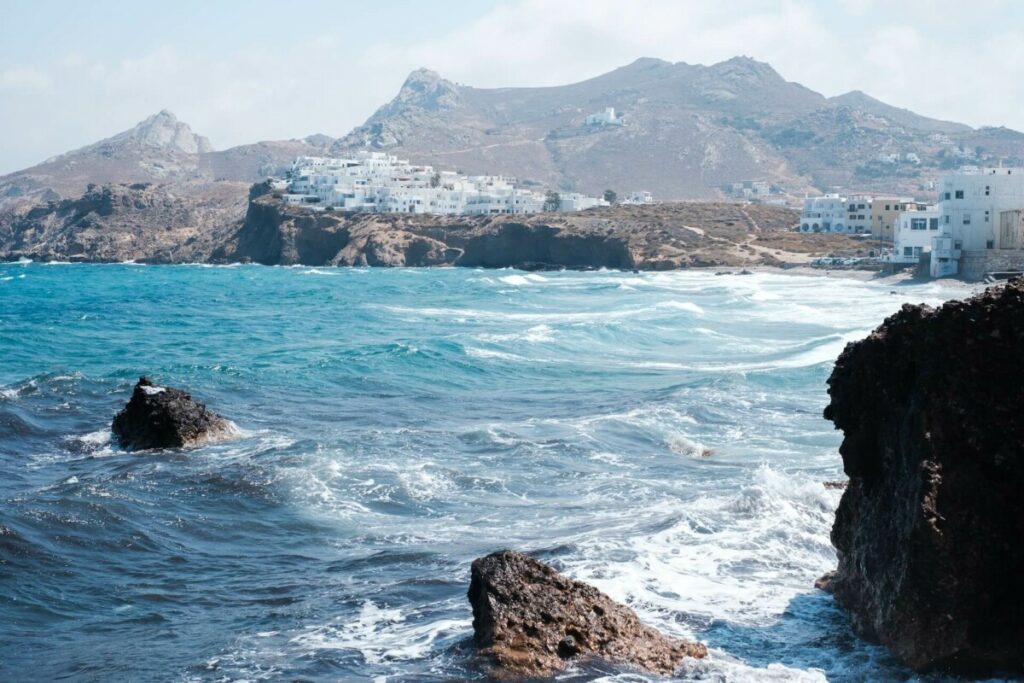

Naxos is the largest of the Cyclades Islands in Greece, located in the Aegean Sea. It comprises more than 160 square miles and has a Mediterranean climate with hot, dry summers and mild winters. The island is characterized by its rugged terrain, including Mount Zas (the highest peak at 906 meters), as well as lush valleys and olive groves.
History
Naxos has been inhabited since antiquity and was an important center for trade during the Byzantine period. In more recent times, it was part of the Venetian Empire, until 1537 when it became part of Ottoman rule. In 1821, the island joined modern-day Greece. Today, Naxos is known for its production of marble sculptures, which can be found throughout Greece and its islands.
Naxos is a stunningly beautiful island with its ancient ruins, lush vegetation, and pristine beaches.
Crete
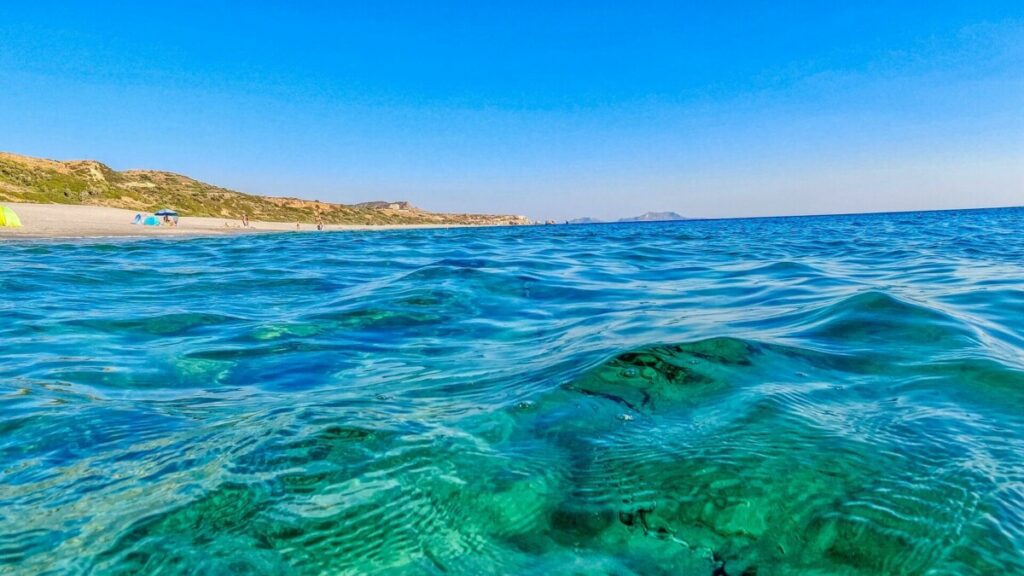

Crete is the largest of all Greek islands, located in the southeastern Mediterranean Sea. It has a typical Mediterranean climate with hot summers and mild winters. The island is characterized by its stunning beaches, rugged mountainscapes, ancient ruins, traditional villages, and vibrant cities such as Heraklion and Chania.
Crete is one of Greece’s most popular tourist destinations – and for good reason. With beautiful ancient buildings nestled amongst lush greenery and traditional Greek cuisine to boot, there are few better places to visit for families and couples alike.
History
Crete has been inhabited since Neolithic times (7000 BC). In antiquity, it was home to the Minoan civilization (3000-1400 BC), one of Europe’s earliest civilizations which left behind impressive palaces like Knossos Palace.
Later on, it became part of the Roman Empire until 1204 when Venetians took control over the island for almost 400 years. In 1669, Ottoman Turks conquered the island until 1898 when Greece gained independence from Turkey.
Crete is an island full of history and culture, with many attractions to explore. Its stunning landscape and pleasant climate make it a great destination for any traveler.
Rhodes
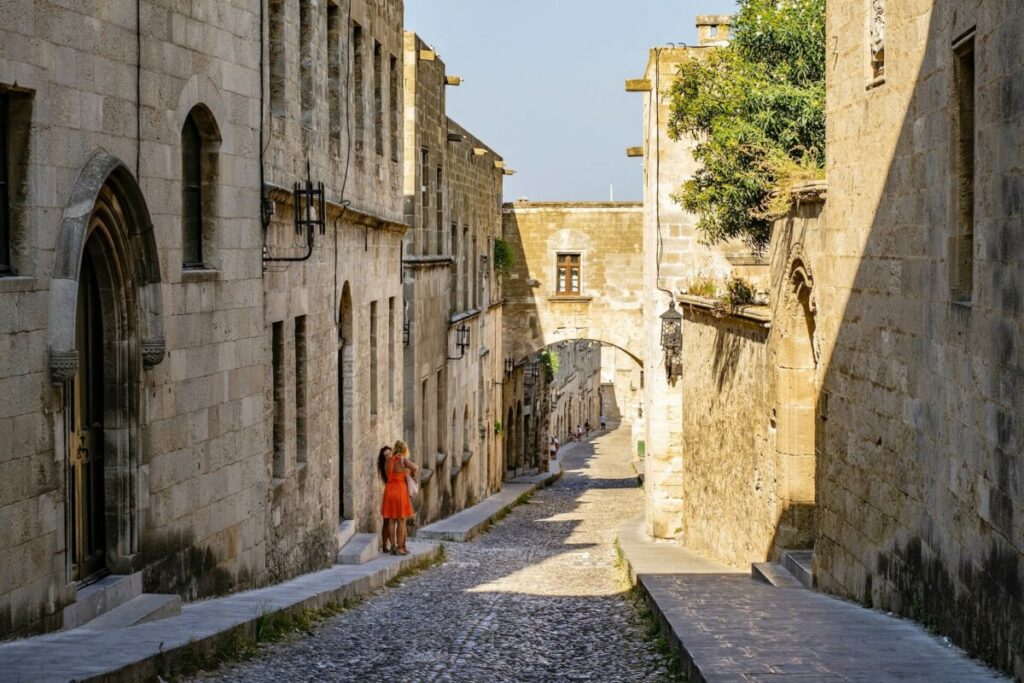

Rhodes is the largest of the Dodecanese islands, located in the eastern Aegean Sea, just off Turkey’s coast. This picturesque island is known for its lush vegetation, rolling hills, crystal-clear waters, and stunning beaches.
History
Rhodes has been inhabited since prehistoric times and was home to many civilizations throughout history including Minoans, Dorians, Romans, Byzantines, Venetians, and Ottomans.
In 1309, it became part of the Knights Hospitaller’s rule over Greece, until 1522 when they were defeated by Suleiman I. In 1912, Rhodes became part of Italy until 1947 when it joined Greece as an autonomous state within the Greek Republic.
Old Town of Rhodes offers visitors a glimpse into medieval life with its walled city full of cobblestone streets lined with shops selling traditional wares such as handmade jewelry or leather goods.
Monolithos Castle stands proudly above Faliraki Beach offering stunning views down below, where one can also enjoy swimming or sunbathing on soft white sand beaches.
Rhodes is a beautiful and historic island, perfect for those who want to explore the wonders of Greece. Now let’s turn our attention to Chios, another stunning Greek island with its own unique history and attractions.
Chios


Chios is an island located off Turkey’s coast in the northeastern Aegean Sea. This member of the North Aegean islands offers visitors a unique blend of culture and nature experiences, due to its rich history as well as its stunning landscapes dotted with pine forests and olive groves.
The Mediterranean climate provides hot summers and mild winters, making it ideal for outdoor activities such as swimming, sailing, hiking, biking or simply relaxing on one of the many beaches.
Chios has a total area of 842 square kilometers (324 square miles) with about 50 kilometers (31 miles) of coastline. It is mostly mountainous terrain with some lowlands along the coasts where most settlements are found.
Its highest peak is Prophet Elias at 1,624 meters (5,328 ft). The climate is typically Mediterranean with hot summers and mild winters that make it perfect for outdoor activities year-round.
History
Chios has been inhabited since prehistoric times by various civilizations including Greeks, Romans, Byzantines, and Ottomans, all of whom left their mark on the island’s architecture and culture today.
During Ottoman rule in particular there was a significant development in trade which led to economic prosperity that can still be seen today in some areas like Mesta Village, which was built during this period as a fortified settlement against pirate raids from North Africa.
FAQs About the Largest Greek
Islands
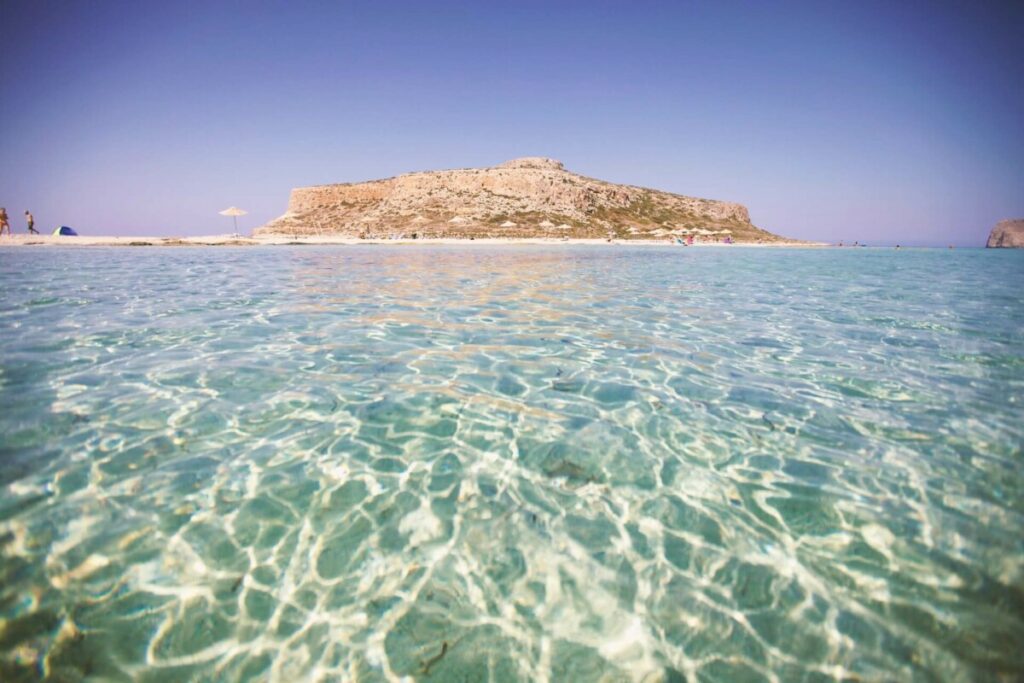

What are the biggest islands in Greece?
1. Crete is the largest Greek island, covering an area of 8,336 square kilometers. It is located in the Mediterranean Sea and has a rich history dating back to the Minoan civilization. It offers stunning beaches, ancient ruins, vibrant cities, and beautiful landscapes for visitors to explore.
2. Lesvos is the second-largest Greek island with an area of 1,630 square kilometers. Located in the Aegean Sea, it boasts many attractions including archaeological sites from antiquity as well as picturesque villages along its coastline that are perfect for exploring on foot or by boat.
3. Rhodes is the third-largest Greek island with an area of 1,398 square kilometers and lies close to Turkey’s coast in the southeastern Aegean Sea. Its main attraction is its medieval city which was declared a UNESCO World Heritage Site in 1988 due to its impressive architecture and cultural significance throughout history.
4. Chios covers 904 square kilometers making it the fourth biggest among all Greek islands, situated off mainland Greece’s western coast in the eastern Aegean Sea.
This beautiful destination features some of Greece’s most stunning scenery, including lush forests filled with mastic trees and fragrant flowers growing wild across rolling hillsides.
The scenery is dotted with traditional villages that are great for exploring on foot or bike rides. Here, nature trails lead up mountainside peaks that offer breathtaking views over the crystal clear waters below them.
What is the largest Greek island?
The largest Greek island is Crete, located in the Mediterranean Sea. Its capital city is Heraklion and it’s home to some of Greece’s most popular tourist destinations, including Knossos Palace, Samaria Gorge National Park, Elafonisi Beach, and Chania Old Town.
Crete also boasts a rich history dating back to Minoan civilization with many archaeological sites scattered throughout the island. With its stunning beaches, vibrant culture, and unique cuisine, Crete offers something for everyone looking for an unforgettable holiday experience in Greece.
Final Thoughts
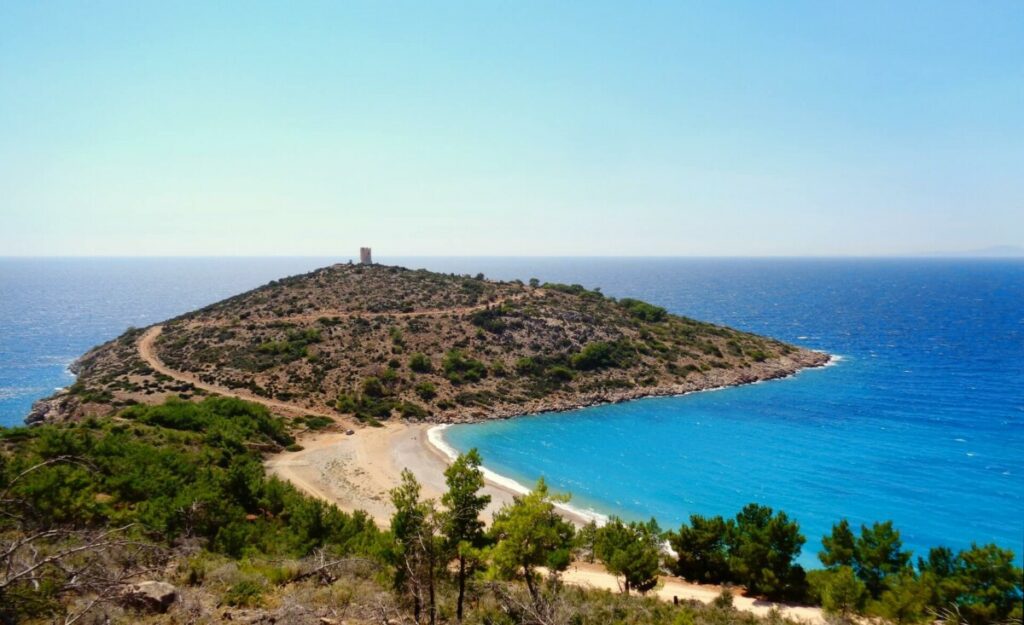

The largest Greek islands are Lesvos, Naxos, Crete, Rhodes, and Chios. Each of these islands has something unique to offer visitors in terms of culture, history, and scenery.
Interestingly, none of the Ionian islands or islands in the Saronic Gulf feature on this list, but two North Aegean islands comprise part of the largest islands list.
While all the Greek islands offer abundant natural beauty and easy access to central Greece, the major islands listed provide tons of space for you to enjoy an action-packed or relaxing vacation – whichever you prefer.
From picturesque beaches and crystal-clear waters to ancient ruins and vibrant nightlife, discover why so many people are flocking to these beautiful isles. Learn more about what makes each island unique by reading our guide on the biggest Greek Islands today!


